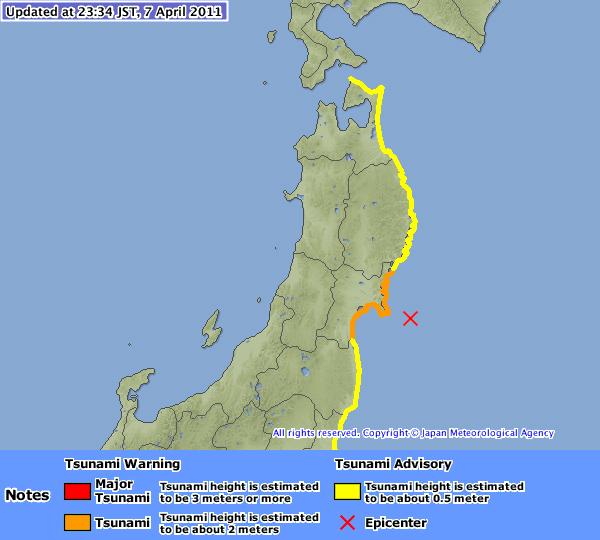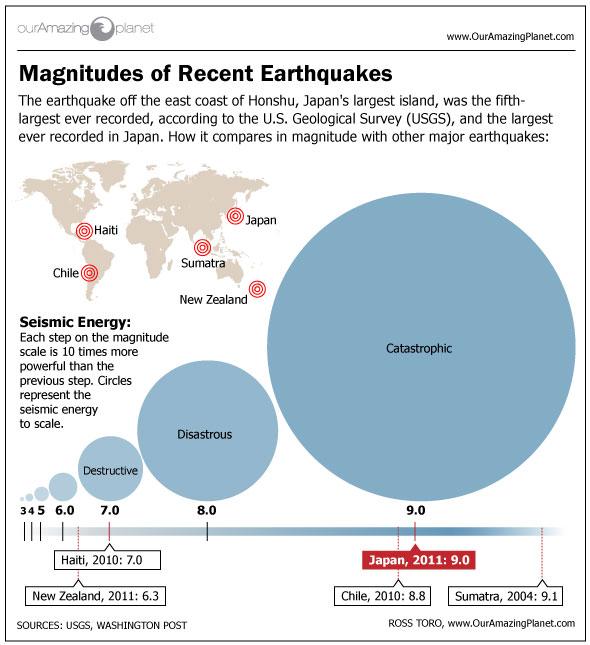Large Aftershock of Japan Quake Strikes


Update 11:30 a.m. ET: The USGS has downgraded the magnitude of the aftershock to a 7.1.
A magnitude 7.4 earthquake rocked Japan today, one of the largest since the devastating magnitude 9.0 quake last month, according to the U.S. Geological Survey (USGS).
Japan has been rocked by hundreds of aftershocks since the deadly quake on March 11. The largest aftershock was a magnitude 7.9 quake that struck less than an hour after the main shock. A magnitude 7.7 also struck that day. Today's aftershock is the third largest. [When Will the Aftershocks in Japan End?]
The latest aftershock struck about 41 miles (66 kilometers) east of Sendai, and 21 miles (34 km) west southwest of the epicenter of the magnitude 9.0 quake. The quake ruptured 25 miles (40 km) below the Earth's surface.
The rule of thumb for aftershock strength is that the biggest aftershock will be about one magnitude smaller than the mainshock.
The strength of this latest aftershock "doesn't surprise us, not with the main shock being a magnitude 9.0," said Julie Dutton, a geophysicist with the USGS in Golden, Colo.
The Japan Meteorological Agency issued a tsunami warning for areas of Japan, but later called it off. The Pacific Tsunami Warning Center did not issue one for the U.S. West Coast.
Get the world’s most fascinating discoveries delivered straight to your inbox.
Since the main quake off Japan's northeastern coast, hundreds aftershocks have shaken the island of Honshu, Japan's largest and home to 100 million people. The aftershocks include 58 of magnitude 6 or greater, according to the USGS.
Today's aftershock was caused by thrust faulting near the Japan Trench, the boundary between the Pacific and North America tectonic plates (the huge, moving slabs of the Earth's crust). Thrust faulting happens when one tectonic plate dives under another. In this case, the Pacific plate is diving under the North America plate.
Before the magnitude 9.0 earthquake, only nine magnitude 7.0 or greater earthquakes had ruptured in this subduction zone since 1973.
- Japan's Tsunami: How It Happened
- The Science Behind Japan's Deadly Earthquake
- Tsunami Hits Japan After Massive 8.9 Earthquake
Email OurAmazingPlanet staff writer Brett Israel at bisrael@techmedianetwork.com. Follow him on Twitter @btisrael.



